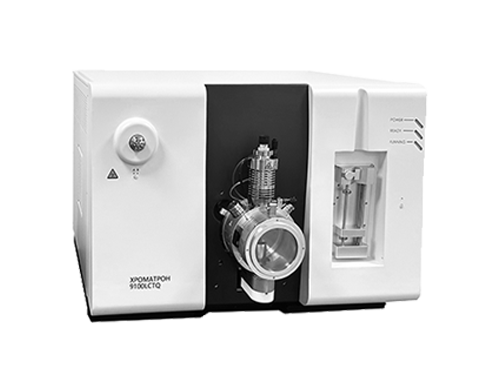


1 Triple Quadrupole Mass Spectrometer
1.1 Ion Source: The "plug-and-play" ion source comes equipped with an Electrospray Ionization (ESI) source and an Atmospheric Pressure Chemical Ionization (APCI) source, allowing for convenient and rapid switching between sources. It is easy to clean and maintain without the need to vent the MS vacuum system.
1.1.1 The ESI and APCI needles are interchangeable with a plug-in design, enabling intelligent automatic recognition and rapid replacement of the ESI and APCI sources within 30 seconds, without the need to replace the entire ion source.
1.1.2 The vacuum interface features a cone-shaped hole structure with a diameter of 0.6mm. It utilizes heated gas curtain backflush technology to maintain high sensitivity and excellent resistance to contamination. The cone-shaped hole design is easy to clean and reusable.
1.1.3 Flow rate range for the Electrospray Ionization source: ESI± mode, 5μL/min-3mL/min, temperature range: ambient ~750℃. It prevents ion suppression in electrospray and has a self-cleaning probe function.
1.1.4 Flow rate range for the Atmospheric Pressure Chemical Ionization source: APCI± mode, 200-2000uL/min, temperature range: 100~750℃.
1.1.5 Desolvation capability: The ion source has one nebulizer gas line and two heated drying gas lines, with a maximum auxiliary heating gas temperature of 750℃, to ensure maximum ionization efficiency and resistance to matrix interference. The nebulizer and drying gases are controlled using an EPC constant pressure mode, with a maximum gas pressure of 100 psi.
1.1.6 Active exhaust emission within the ion source: Equipped with an active exhaust emission device to prevent gas backflow in the enclosed ion source chamber, reducing memory effects and pollution in the ion source, lowering the mechanical pump load, extending its service life, maintaining the test environment, and protecting the health of staff.
1.1.7 Ion transmission: The secondary vacuum ion transmission components adopt a micro circular quadrupole rod design with enhanced RF radio frequency voltage focusing, allowing more ions to enter the mass analyzer while being easy to clean and maintaining high sensitivity and excellent stability.
1.1.8 Q0 ion focusing transmission: Q0 utilizes a circular quadrupole rod for ion transmission and is equipped with high-voltage collision ion focusing technology, significantly improving ion capture and transmission efficiency.
1.2 Mass Analyzer:
1.2.1 Mass Analyzer: Triple Quadrupole Mass Analyzer;
1.2.2 Quadrupole Rod: Made of pure metal material to ensure stability of the mass axis and mass resolution.
1.2.3 Mass Range m/z: 5~2000 amu.
1.2.4 Scanning Speed: 10,000 amu/sec.
1.2.5 Resolution: Can achieve unit mass resolution <0.8 amu.
1.2.6 Mass Stability: 0.1 amu/24 hours (based on two tuning results within 24 hours, with ambient temperature fluctuations <2℃).
1.2.7 Tandem Mass Spectrometry Function: MS and MS/MS.
1.2.8 Reproducibility: Injecting 5pg of tacrolimus (or other equivalent standard samples) onto the column at least 5 times, with a peak area RSD of less than 5.0% and a retention time RSD of less than 5.0%;
1.2.9 Dynamic Range: 4 orders of magnitude;
1.2.10 Sensitivity: For ESI+, with 1pg of reserpine injected onto the column and using MRM 609/195, the signal-to-noise ratio (S/N) is greater than 200,000:1; for ESI+ and reserpine injected onto the column using MRM 609/195, the instrument's IDL (Instrument Detection Limit) is less than 6fg.
1.2.11 Scanning Capabilities: Includes Full Scan, Selected Ion Monitoring (SIM), Product Ion Scan, Precursor Ion Scan, Neutral Loss Scan, and Multiple Reaction Monitoring (MRM).
1.2.12 Collision Cell: Designed with a 180-degree curved linear acceleration, the collision cell features faster ion transmission and higher ion capacity, effectively preventing cross-contamination and more efficiently removing neutral ions.
1.2.13 Gas System: Uses high-purity nitrogen as both the nebulizing and collision gas, eliminating the need for additional argon. The collision gas is provided by a nitrogen generator, eliminating the need for additional gas cylinders.
1.2.14 Built-in Automatic Control Syringe Pump: Featuring an integrated software for automatic control of the syringe pump, allowing for tuning and calibration of the instrument while meeting the liquid delivery requirements for optimizing compound parameters.
1.2.15 Built-in Integrated Software for Automatic Control Switching Valve: Utilizes integrated software for automatic control, enabling the switching of liquids flowing into the mass spectrometer according to different programmed times, satisfying various application requirements of the six-way valve.
1.3 Ion Detection System: Non-continuous dynode electron multiplier.
1.4 Vacuum System: Consists of a mechanical pump and an integrated multi-port turbo molecular pump, forming a three-stage vacuum differential pumping system in the ion transmission area and mass analysis area. The foreline vacuum uses a high-speed, low-noise, and low-vibration mechanical pump with a pumping speed of 40m3/h, greatly reducing noise. The high vacuum employs a high-speed integrated multi-port oil-free molecular turbo pump system, air-cooled, eliminating the need for water cooling, and featuring automatic power-off protection.
1.5 Data System Software:
(1) Operates on Windows 10 or above, 64-bit computing platform, and similar or higher environments.
(2) Chemical workstation and data processing software support both Chinese and English languages.
(3) Data acquisition software and data processing software are independent of each other. The data processing software supports offline data analysis and processing on multiple computers.
(4) Data acquisition software can achieve instrument hardware configuration, permission management, control of modules of LC instruments and MS instrument, real-time online feedback on instrument status, tuning and calibration of instruments, optimization of compound parameters, method creation and storage, sequence data acquisition, and other functions. It supports multiple liquid chromatography instrument configuration options and automatically generates tuning and calibration reports. Method settings support MRM scanning and acquisition for multiple time periods, maximizing the efficiency of acquisition time for each pair of MRM ions. MS method ion pair information can intelligently import thousands of ion pair database entries through pre-editing, eliminating the need for manual single-line operations in the software.
(5) Data processing software allows for data spectrum browsing, chromatogram/mass spectrum display, ion pair extraction, spectrum comparison, peak statistics (retention time, peak area calculations), ion pair abundance ratio display, various smoothing algorithm processing for spectra, signal-to-noise ratio calculations, manual/automatic integration, batch processing method creation, quantitative analysis method establishment, rapid qualitative and quantitative analysis of batch-processed data, and automatic generation of various qualitative and quantitative analysis reports.

Linked in


Whats App




